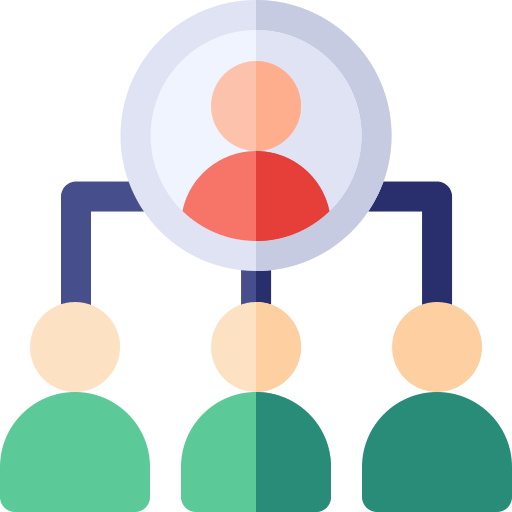At schools, colleges, workplaces, and even at home, we have encountered this term called leadership. We all are familiar with the word. But let me tell you it is not just a word, it’s a responsibility which comes with authority.
In simple terms, it means the action of leading a group of people or an organization. It is a state of position and authority.
“ Leadership is the capacity to translate vision into reality.”
What is Leadership?
More specifically, it is both a research area and a practical skill surrounding the ability of an individual or organization to “lead” or to “guide” other individuals, teams, or an entire organization and people who practice the art of leadership are known as leaders.

Leaders help themselves and other people and organizations to grow and build, motivate, inspire, and set directions to be followed to achieve success.
“Leadership is an art.”
Yes, it is an art, art of motivating and guiding a set of people or an organization to achieve the set goals. This quality has the potential to influence other people’s behaviour.
“A leader is one who knows the way, goes the way, and shows the way.”
John C. Maxwell
Qualities of a Leader
It is a family pack of many qualities. Hence, a good leader is the one who has the following qualities –
- Honesty
- Delegate
- Communication
- Confidence
- Commitment
- Creativity
- Inspiration
- Empathy
- Accountability
- Enthusiastic
- Focus
- Responsible
These qualities show the personality of a leader.
” A good leader guided by principles makes him a great leader.”
There are 7 core principles of leadership –
- Courage
- Integrity
- Planning
- Priorities
- Proactive
- Listening
- Learning

Now that we know about the qualities and principles of a good leader, we must also know that the type of leadership part you play in different places or situations are also equally important.
Success is not only a matter of being a leader but also flexibility, you must know ‘when and how’. You must know what type of skills to implement in what kind of situation.
So let’s explore.
Types of Leadership Styles –
1. Effective Authoritarian Leadership –
This style of leadership runs at the risk of keeping away the team members but can be extremely effective in high-pressure environments.

Here the leader makes clear that everything is done according to the policies and procedures and all the decisions are taken by him. This is followed where there is little room for mistakes.
Examples of leaders include Adolf Hitler, Benito Mussolini, Kim Jong-un, Larry Ellison, Lorne Michaels, Richard Nixon, and Vladimir Putin. These great leaders are the iron-solid examples of this style.
2. Effective Procedural Leadership –
This style demands that every step is taken according to the policies and procedures of the company.

To be successful, procedures must be reviewed regularly and kept up to date. Adam Smith is an excellent example of effective procedural leadership.
He played a part in revolutionizing industrial manufacture with a division of labour, which he believed would lead to a massive increase in productivity.
3. Effective Transformational Leadership –
In this style, leaders motivate their staff to come out of their comfort zones and be flexible with different kinds of jobs.

Here, the leader encourages his subordinates to adapt to changes in the environment and work accordingly to achieve goals. The best suitable example of this style can be Barack Obama.
The rallying cry of his campaign – “Yes We Can!” – convinced millions of Americans that there was hope in their future if they united, voted, and trusted in the government.
He provided them with tools and information allowing them to be part of changing their country in positive and meaningful ways.
4. Effective Participative Leadership –
In this style, the leader tries to involve its staff or subordinates to take part in the decision-making process of the company. He strives to enhance their problem-solving quality.

Walt Disney, best known for making our childhood memorable by his art of animated films is the best-suited example. As it took hundreds of artists to create our favourite cartoon characters, this piece of work demanded the involvement of every artist.
Disney was successful because, despite the involvement of hundreds of brains, the last final decision was his.
5. Effective Laissez-Faire Leadership –
It’s a real hands-off approach, most effective when an organization has a strong focus on subordinate autonomy.

Staff is expected to manage their own time whilst those in charge offer only gentle guidance. Google’s Larry Page and Sergey Brin did exactly that.
They famously introduced the “20% Policy” where, as well as their regular duties, employees were encouraged to spend 20% of their time working on creative and innovative ideas that could benefit Google and its future success.
“Leadership is all about the action and not position.”
Management Vs Leadership
“Management is all about doing things right and leadership is all about doing the right things.”
We all know that everything works with management, management is the art of doing things right. Usually, we all get confused between management and leadership.
We often take leadership for management and management for leadership. Leadership is an important part of management. It is very essential for effective management of the organization. A manager must be a potential leader.
Management includes focus on planning, organizing, staffing, directing, and controlling; leadership is mainly a part of the directing function of management whereas Leaders focus on listening, building relationships, teamwork, inspiring, motivating, and persuading the followers.
Management without leadership and leadership without management can be a disaster for the individual and organization. Both of them are essential for the achievement of goals.
“A Leader is the one who knows the way, goes the way, and shows the way.”
Effective Leaders
Besides being a good communicator, motivator, guide, a good and efficient leader needs to be courageous, passionate, ambitious, have confidence, and be consistent in his commitments. These traits are very much important to have effective leadership.
Effective leaders are characterized by his boldness, assertiveness, trustworthiness, and consistency. An effective leader should be dependable or reliable. Most importantly, communication is the core quality of leadership.

Leadership is a very important trait and it is difficult to keep with these traits. There are some rules that one should follow to keep up with it and participate in leadership. 5 best rules should be followed :
- Lead Yourself
- Understand True Leadership
- Communicate and Motivate
- Keep Going
- Be Real
How to become a Leader?
Before you participate in the Master chef competition, you should know how to cook. Similarly, before you can lead someone ( some individual, or organization) , you should know how to lead yourself. You should be disciplined, have a self – actualization trait, sense of purpose, and humility.
It’s quite important to understand what exactly is leadership and how it is to be applied in practical life. It’s also helpful to study other successful leaders and businesses and learn from them.
Breaking down the concepts of independence, interdependence, and continual improvement results in meaningful and consistent growth, which is essential to embrace and grow leadership quality.
To lead and further enhance your leadership qualities, you must inspire others to follow your example, orders, and instincts. It will help you be able to attract, engage, and encourage employees, business partners, and potential clients to get on board with your plan or proposal. The ability to motivate is central to leadership.
True Leader
If Abe Lincoln can unite his cabinet and the country around abolishing slavery amidst war, you can probably reconcile conflicting personalities in your company.
Meshing people of divergent ideologies into a team or group is an admirable leadership trait. He was humble and unafraid to be challenged. These are the two traits that will serve every leader.

Sometimes things don’t go as planned. At that point of time, you have to keep going and not be negative, it will not only distract you from the path of success but will discourage your colleagues and subordinates and also dismantle their faith.
If and when that happens, you’ll have to pick yourself up and start all over again. Starting over again when things go wrong is the strong trait of leadership. Perseverance and resilience are mandatory when your decisions challenge you in the path of achieving your goals.
“A true leader has the confidence to stand alone, the courage to make tough decisions, and the compassion to listen to the needs of others. He does not set out to be a leader, but becomes one by the equality of his actions and the integrity of his intent.”
Douglas MacArthur
Reality
You have to face it in the battleground. No one can fake leadership. And, if they can, it won’t last long. Acknowledging fear and vulnerability are far more valuable leadership skills than being cold or shut-off, running from making decisions, and taking responsibility.
Being real and standing to take responsibility for failures, is the true face of a leader.
Being vulnerable and in fear does not necessarily have to be a weakness. Trying is always better than sitting and doing nothing. Fear and shame should not prevent us from taking daring decisions. trusting yourself is very essential at this point.
Let’s discuss some real-life stories of great leaders of the time:
Mahatma Gandhi
He was an excellent example of a good leader. He was a staunch believer in non-violence. With his brilliant Leadership skills, he made the British leave India.
Probably, this was the most unique independence struggle. This is because Gandhi got freedom without any violence.
Abraham Lincoln
He was another great notable leader of times. He ended the slavery system in the United States of America. Consequently, he made many enemies.
But he did not let those fear him out of his inspiring decision. He was a man of massive self-confidence that made his struggle against slavery inspiration for the whole world.
Sir Winston Churchill
He was a great patriotic Englishman. Most noteworthy, he led Britain in the Second World War. Furthermore, he was extremely inspirational. He inspired Britain to fight against Nazi Germany.
His great communication skills motivated the entire country at a time of hopelessness.
To conclude, Leadership is required in probably every sphere of life, be it in the war, in an organization or business, or even at home.
Other than books and real-life experiences there are some real-life stories, movies, and books, from which we can learn the art of leadership and management.
There are many must-see movies to extract leadership qualities and management lessons. Some of these are as follows :
- The Social Network (2010)
- Wall Street (1987)
- The Big Short (2010)
- 12 Angry Men (1957)
- Up In The Air (2009)
- Other People’s Money (1991)
- Working Girl (1988)
- Invictus (2009)
Books to be used for these purposes are :
- Meditations, by Marcus Aurelius
- Man’s Search for Meaning, by Victor Frankel
- The Alchemist, by Paulo Coelho
- Good to Great, by Jim Collins
- Start with Why, by Simon Sine
- Leaders Eat Last, by Simon Sine
- Effective Leadership, by John Adair
FAQ’s
Ans: Roles every leader should fulfil are: Being a Coach, Facilitator, Strategist, Visionary, Change bringer, Decision maker, Influencer, Team Player.
Ans: A great leader is the one who poses all the qualities of leadership like communication skills, humility, confidence, creativity, integrity, trustworthiness, honesty along with passion, ambition, vision.
Ans: With self-awareness, communication, influence, and learning ability as the core of your leadership skills development.
Ans: Democratic leadership is one of the most effective leadership styles as it allows lower-level employees to exercise the authority they will need to use wisely in the future.
Ans: A successful leader is an influencer who can motivate and inspire and get the best out of his people. He stands for his decisions and does not give up trying.
Ans: Hardest parts of being a leader are handling of conflicts, avoiding favouritism, avoiding discrimination and prejudices, balancing authority, taking responsibility, being dependable.


Pingback: Personal Skills | Types of Personal Skills | Soft Skills | Thinkerspoint
Pingback: Support: A Teamwork Skill | Soft Skill | ThinkersPoint
Pingback: Delegation In Teamwork - Thinkers Point
Pingback: Teamwork | Importance of Teamwork | Soft Skills | Thinkerspoint
Pingback: Soft Skills | Importance of soft Skills | Thinkerspoint
Pingback: Top leadership institutes in Bangalore | training institutes | Thnkerspoint
Pingback: Top leadership institutes in Chennai | training institutes | Thinkerspoint
Pingback: Top Leadership Institutes in Delhi | training institutes | Thinkerspoint
Pingback: Top leadership institutes in Hyderabad | training institutes | Thinkerspoint
Pingback: Top leadership institutes in Kolkata | training institutes | Thinkerspoint
Pingback: Interpersonal Communication Skills | ThinkersPoint